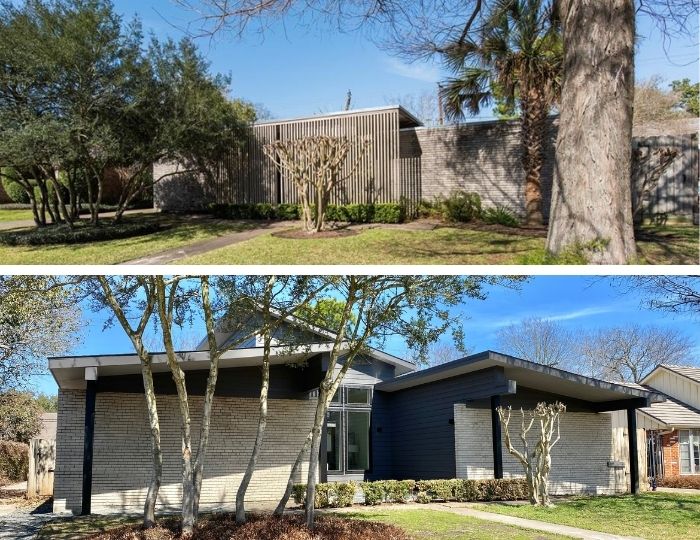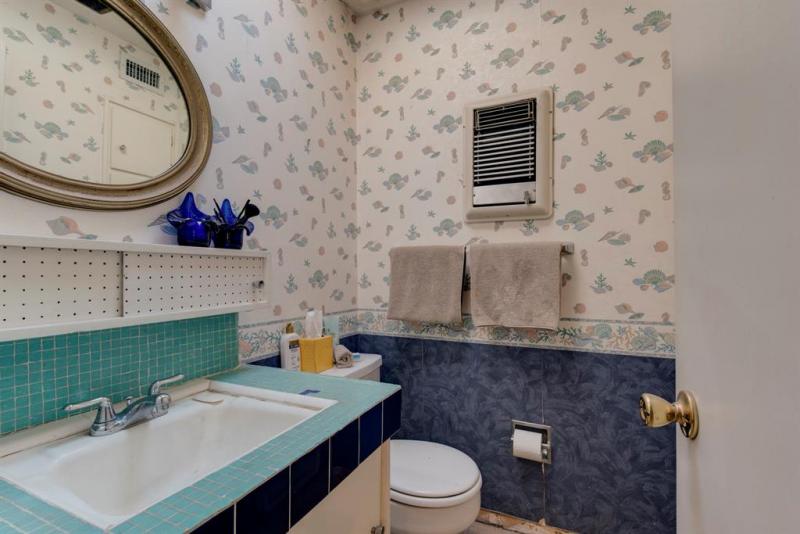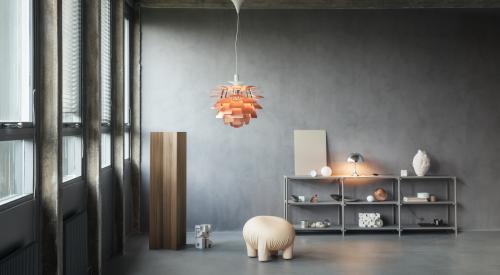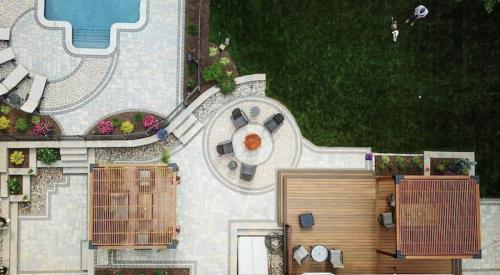In 1959, the flat-roofed home with iconic mod wood slatted screens in the recently developed Westbury neighborhood of Houston was an architectural stunner. Sixty years later, it remained untouched, in desperate need of rehab—designer Marissa Sorola was up for the challenge.
That challenge became harder than initially thought, but the CEO of Houston-based design firm The Luxe Group had done plenty of flips already. How much harder could this one be?
About $65,000 over budget and two whole years harder.
READ MORE: PROJECT OF THE WEEK: PRODUCTS’ HIGH PERFORMANCE DEMONSTRATION PROJECT WRAPS UP
Initial Plans and Challenges
As part of the Greater Houston Builders Association Parade of Homes, the mid-century modern home, designed by architect William Floyd, was just one of the unique architectural gems lining Warm Springs Road. Sorola purchased it in February 2019 and anticipated needing just six to eight weeks to bring the jewel back to its glory with modern additions while retaining its mid-century character.
“It was in really, really, really bad shape,” recalls Sorola. “It was in horror movie shape. I wanted a gas mask just to walk in because I felt like my clothes were burning when I was walking into it, it smelled so bad. But of course, that’s the best opportunity, so I was able to get it for a really good deal. And I was well above my confidence means.”
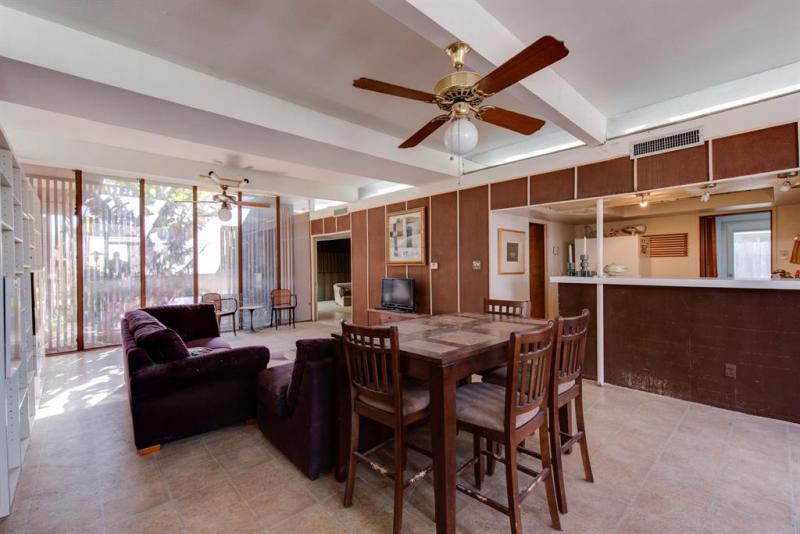
Living room before
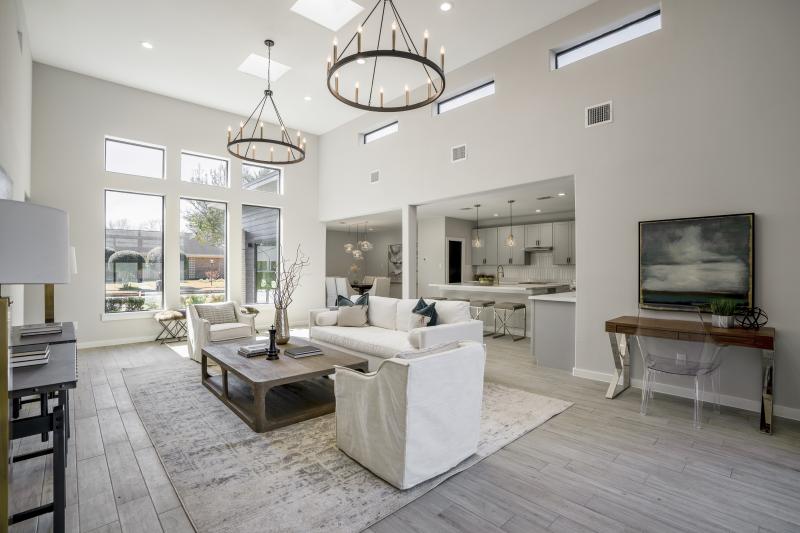
Living room after
She purchased it quickly to secure the deal and waived inspections. That would become mistake number one, Sorola says.
But the designer had big plans for what would be her largest project to date. It would be Sorola’s showpiece and the catalyst that would propel her into the house flipping field. The first step on that journey would be to work on the flat roof.
Then came the inspector.
Structural challenges emerged as the most difficult part of the project. From the roof to the electricals, nearly every inch of the home presented Sorola with a new complication. All the walls were opened up to update electricals, but then support beams were deemed unfit. All wood on the perimeter of the home needed to be scrapped and replaced to support the new roof.
After throwing more than $5,000 to save the original roof, it was deemed unsalvageable. New skillion roofs and large windows in the entry still hark back to the home’s original aesthetic.
Primary bath before
Primary bath after
The Hard Pivot
After remedying the structural issues, Sorola says she had gone well over budget, left with just a fraction of funds left for finishes. The largest chunk of the funds left when the contractor fled—about $50,000. But giving the contractor a lump sum was a lesson she learned the hard way.
“I'll never do that again,” says Sorola. “I think draws make much more sense. And I've even heard of contractors where you go in and you create a bank account together where you put money in that account, and then they just write checks off of it. So you can see every single debit interaction happening instead of just giving a contract or a lump sum check, and just hoping that they do right by you—which this guy, unfortunately, did not.”
READ MORE: PROJECT OF THE WEEK: WINDOWS, WOOD TIE MODERN MIDWEST HOME TO THE OUTDOORS
Design plans needed a hard pivot, and Sorola knew that adding mid-century modern aesthetics would, unfortunately, alienate many buyers. She changed focus to creating something more universal. One goal that did not change through the process was shifting the home’s functions for a 1950s family to a modern-day family.
The final project features three beds, three baths, and 1,867 square feet. Initially, the outdated floor plan featured compartmentalized rooms with antiquated uses and small footprints. Sorola opted to open everything up, and the roof redo worked in her favor, allowing for ceilings reaching 20 feet in height.
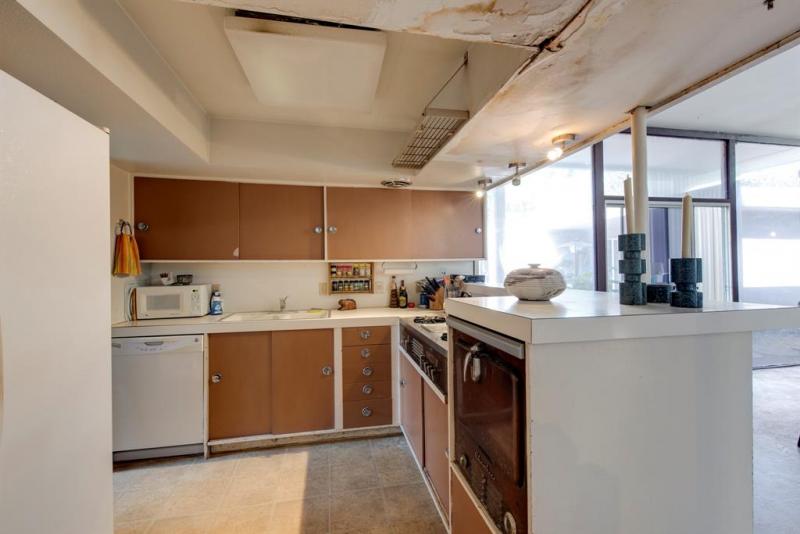
Kitchen before
Kitchen after
“I opened up all those walls, and I created one open kitchen that overlooks the living room, and then everything flowed,” says Sorola. “And then I closed off the utility room, and I added a mudroom, and I put it more towards the back of the house so that whenever you walked in from the garage, you access that stuff as well. The kitchen was a square, and I turned it rectangular, and I made it parallel with the sides of the house so it was long and it faced the living room. And that was the biggest change that I made.”
A compact primary bedroom opened up too, and Sorola even expanded the primary closet by converting a small hallway. A mudroom, pantry, and much larger kitchen were modern-day necessities she knew she needed to incorporate somehow.
“Just being mindful of space planning and figuring out ways to make it more functional alone makes the value go up,” says Sorola.
Space planning also took the form of utilizing pocket doors throughout the home. And when it came time for the finishes, Sorola reverted to her years of design expertise to maximize whatever remained from her budget, “If you go high on something, go low on another.”
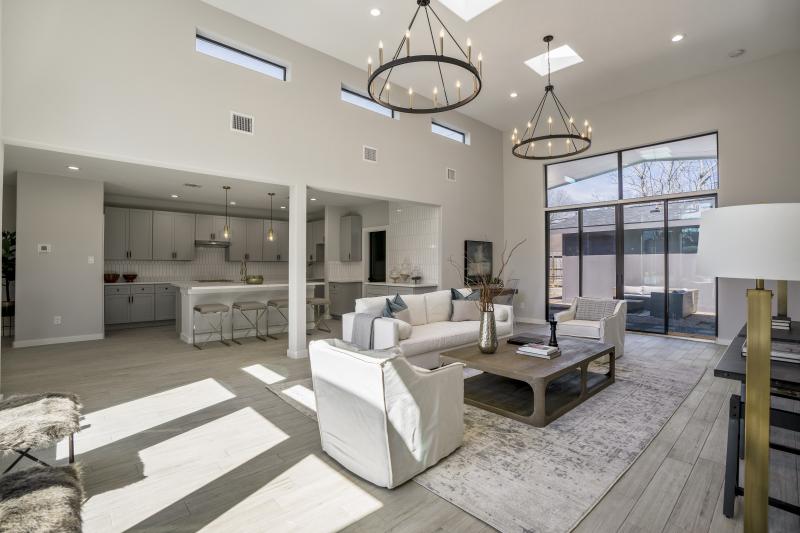
If initial plans remained, the primary bath would have received a new hexagonal window. That piece would have brightened up the tiny space, so Sorola opted for light-colored finishes, ceiling-height mirrors, and cleverly wired lighting that would reflect off the mirror to add extra glamour and light. Those features, plus using a shower pan and mosaic tiles, saved her nearly $700.
The home features Floor & Decor wood-look ceramic tiles (Sorola suggests going with 1/16-inch grout lines to look more like hardwood) and much of the products in the kitchen—lighting, the faucet, and sink—came from Wayfair.
When Sorola listed the home in March 2021, it received seven offers within 24 hours, several over asking, and closed in 11 days. Plus, it won Sorola the Wayfair Tastemaker Award for Most Dramatic Renovation.
“You fail forward,” says Sorola. “As hard as it was, I don’t regret any of it and I learned so much.”
Front elevation after
